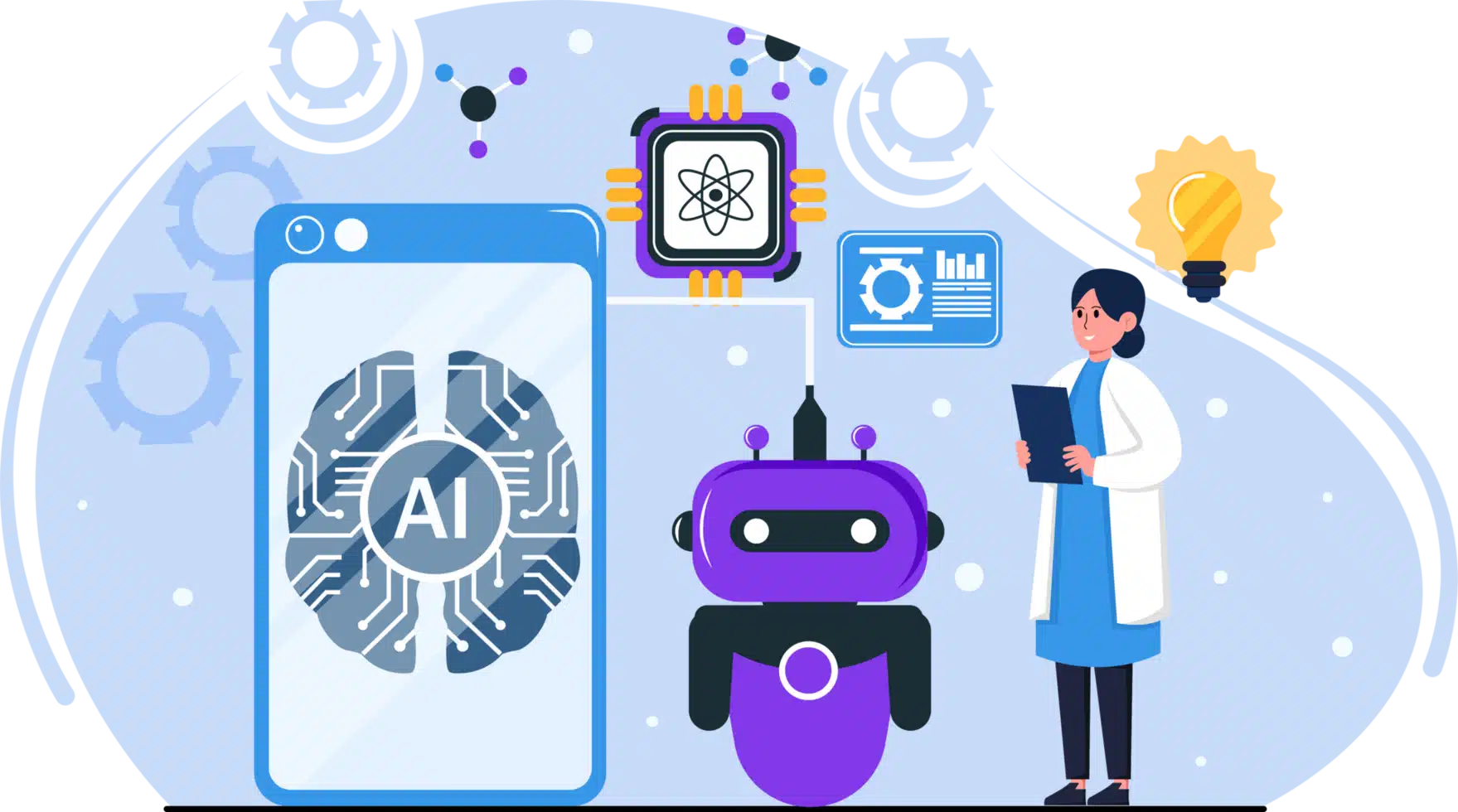Artificial intelligence already automates hiring, personalizes training, and spots flight risks; over the next two years it will add voice-first assistants, skills graphs, and auto-generated learning paths, completely reshaping HR in companies of all sizes.
AI in HR: What Works Today
Modern HR teams already rely on AI for five day-to-day areas identified in AI in HR examples:
1. Recruitment and talent acquisition
Chatbots schedule interviews, large-language models write bias-checked job ads, and predictive matching tools surface overlooked candidates. More than 65 percent of companies now use at least one AI screening step, reducing time-to-hire while widening talent pools.
2. Employee experience and retention
Natural-language sentiment engines listen across email, chat, and survey channels, flagging morale dips early. Personalized pulse nudges point managers toward coaching moments, lifting engagement scores without extra headcount.
3. Performance analytics and workforce planning
AI crunches goal data, project velocity, and macro demand signals to forecast skill gaps months ahead. Gartner expects these models to become embedded in every mainstream HR suite within one to three years, giving leaders drill-down insights in plain language. Gartner AI in HR insights
4. Onboarding and offboarding
Rule-based workflow bots file forms, assign equipment, and trigger e-learning the moment a status changes. Companies like Eaton reported a fourfold increase in talent network size after automating these touchpoints. Seven AI HR use cases
5. Diversity, equity, inclusion
AI tools redact identifying details on résumés and scan pay data for inequities, helping HR teams meet fairness goals without cumbersome manual audits.
What’s Coming Next
Industry roadmaps point to three near-term breakthroughs:
1. Generative AI assistants everywhere
Voice-first agents will sit inside HRIS screens, answering policy questions, summarizing applications, and drafting one-click feedback notes.
2. Skills graphs replace job descriptions
Graph databases will map every employee skill to strategic priorities, auto-suggesting gigs and mentors in real time instead of annual job-family reviews.
3. Predictive coaching
Large models will combine performance, learning, and collaboration data to nudge managers before burnout or turnover risk spikes.
L&D Takes Center Stage
Learning and development is where AI’s promise meets business growth:
- AI curates micro-lessons around daily workflow, turning each project into a learning moment.
- Adaptive engines recommend stretch assignments the moment a skill score rises.
- GenAI tools let SMEs create video, quiz, and simulation content in minutes, slashing production costs.
Yet capability gaps remain. Fifty-eight percent of L&D leaders say widening skill gaps and slow AI adoption top their 2025 challenges, even as 76 percent believe AI will enhance human-led learning.
Getting started
HR leaders can act now:
- Upskill HR and people managers on AI literacy so they ask the right questions and spot bias.
- Build a unified skills taxonomy before plugging in skills-graph vendors.
- Pilot AI-driven learning paths for one high-impact role, measure retention and ramp time, then scale.
Take the next step with OneRange
AI is changing HR, but the real transformation starts when employees have the tools to build the skills they need. OneRange makes that easy.
Our upskilling marketplace connects your team to the best content from across the web—curated, personalized, and approved in just a few clicks. With built-in approvals, budgeting, and payment workflows, L&D becomes simple to scale.
💡 Want to see how AI-powered learning paths can close skill gaps and drive measurable ROI?
Explore our solutions or book a demo with our team.




